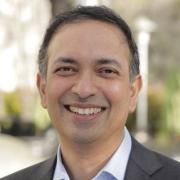Written by Rishea Middlebrooks, CAPM, ACHE Student Associate
Roughly 43% of captured data is largely unused: Discover the solution to multicloud complexity!
Presentation Overview
Seagate Technology's CIO and Executive Vice President of Storage Services Ravi Naik tells the story of how confronting the multicloud complexity head-on led his team to a creative data solution that has since become an external vendor-agnostic storage offering, while also offering practical advice on how business leaders can attain and plan for a clear view into the TCO associated with data storage and usage.
Takeaways
- More data is thrown away or siloed than put to work!
- Roughly 43% of captured data is largely unused
- Barriers to putting data to work
- Ensuring valuable data is collected in the first place
- Managing the storage of collected data
- Making the different silos of collected data available
- Lyve Cloud
- Cloud crafted by Seagate – a cloud created by CIOs for CIOs
- Fully S3 compatible interface
- Flat, predictable pricing
- Pay for what you store – that’s it
- Data retrieval, ingestion, write/read operations, archive retrieval, expert support included
- Open, standard APIs enable rich ecosystem of solutions
- Availability in multiple regions
- 11 9s data durability
- Efficiency with Equinix
- Equinix platform enables reduced latency and lower bandwidth costs at the Metro Edge (200+ data centers globally)
- Equinix is the network backbone for the network internet
- Sub-2 millisecond latency
- Computing or storage capabilities
- Interoperable
- Able to store data on Lyve Cloud and load applications through software stacks
- Looking Forward
- Horizontal scaling across the globe
- Exabyte of storage available by the end of 2022
- Vertical scaling by offering enhanced capabilities and frictionless storage options
- Future certifications: FedRAMP, HIPAA
Next Event
Join us at the next PMI Atlanta Technology Forum on Tuesday, April 26, 2022.
Register at https://pmiatlanta.org/events/event-list/tech-forum-220426







